Spectra SP90m, a GNSS receiver with many options
The Spectra SP90m is a very powerful is a GNSS receiver you can use for a wide variation of applications. The reason for this is that this receiver has some great features.
- Z-blade technology
- Flexibility and ruggedness
- Wireless communication
- On-board machine integration
Z-blade technology
Spectra Geospatial is very happy with their Z-Blade technology. And it is a very nice technology.
Since GPS was the first satellite constellation that was used for positioning it still plays a big role in positioning. In many GNSS receivers the signals of GPS are valued more than the ones of other satellite constellations like GLONASS, BEIDOU and GALILEO. So those receivers always need signals of some amount of GPS satellites to give an exact position.
In the Spectra SP90m GNSS receiver that uses the Z Blade technology that is not the case. This GNSS receiver values all satellite signals the same. So when it gets enough satellites it will give an accurate position. That is why the Spectra SP90m will give more often an accurate position in hard conditions like with trees or close to buildings than other receivers. And that is something you want.
Flexibility and ruggedness
The Spectra SP90m looks like a box. But it has a unique design. Because of this unique design this GNSS receiver can be mounted in different ways. So you are flexible to use it.
The unique design also makes sure the ruggedness of this GNSS receiver. It is weatherproof. Besides it has a high-impact-resistant aluminium housing. That means it is strong and rugged. It is made for rough conditions.
Wireless communication
Besides the ruggedness this GNSS receiver also has some great features considering wireless communication. It has a 3.5G internal cellular modem.
But the Spectra SP90m also accomodates a big variety of UHF solutions. This means it provides a stable and reliable communication line between the base and the rover.
To have great flexibility this GNSS receiver supports an internal receiver with up to 2W. With this you can use it as a base or a rover without needing any additional accessories.
On-board machine integration
The Spectra SP90m is great for applications in agriculture, construction and mining. The reasons for this is that GNSS receiver can be integrated for machine guidance and machine control.
The nice thing of the Spectra SP90m is that you can connect two antennas. This dual GNSS antenna support makes sure that this GNSS receiver gives you the exact and precise heading information without the need for you to use a second GNSS receiver.
Benefits of the Spectra SP90m
So that are some nice features. And these features give you some great benefits. You can use the Spectra SP90m for many different uses. So you can use it for land surveying with the easy to use land survey app Apglos Survey Wizard. You can read more information about this software here.
But you can also use it for machine control and guidance. Also you can use this GNSS receiver as a base or a rover. The possibilities are almost limitless.
With the Z-blade technology it gives you a fixed position even in for GPS hard conditions like under trees and near high buildings. That is what you expect of a GNSS receiver. And that is what you get with this Spectra SP90m.
It is an awesome GNSS receiver that does what it needs to do and more.
Spectra SP90m manual
Spectra Geospatial made a nice manual for this GNSS receiver. In this user manual you can read all what you need to know about the Spectra SP90m. The manual will help you to use this GNSS receiver. Spectra Geospatial calls it user guide. But anyway you can download the user manual for the Spectra SP90m GNSS receiver here.
Besides a user manual there is also a quick user guide for the Spectra SP90m. With the quick user guide you can have this GNSS receiver up and running in no time. You can download the Spectra SP90m quick user guide here.
With this Spectra SP20 manual you will be up and running with this handheld GNSS receiver in no time.
Specifications of Spectra SP90m
Of course you want to know about the specifications of the Spectra SP90m GNSS receiver. And here they are. Just take into account the different variations of this GNSS receiver when you read the specifications.
GNSS ENGINE
- 480 GNSS tracking channels
- GPS L1 C/A, L1P (Y), L2P (Y), L2C, L5, L1C
- GLONASS L1 C/A, L1P, L2 C/A, L2P, L3, L1/L2 CDMA 1
- GALILEO E1, E5a, E5b, E6
- BeiDou B1, B2, B3 1
- QZSS L1 C/A, L1s, L1C, L2C, L5
- IRNSS L5
- SBAS L1 C/A, L5
- Two MSS L-band tracking channels
- Two GNSS antenna inputs 2
FEATURES
- Patented Z-tracking to track encrypted GPS P(Y) signal
- Patented Strobe™ Correlator for reduced GNSS multipath
- Patented Z-Blade technology for optimal GNSS performance:
- Highest quality of raw data (availability/reliability) to meet reference station applications
- Full utilization of signals from all seven GNSS systems (GPS, GLONASS, BeiDou, Galileo, QZSS, IRNSS, and SBAS)
- Enhanced GNSS-centric algorithm: fully-independent GNSS signal tracking and optimal data processing, including GPS-only, GLONASS-only or BeiDou-only solution (from Autonomous to full RTK) 3
- Fast and stable RTK solution
- Fast Search engine for quick acquisition and re-acquisition of GNSS signals
- Patented SBAS ranging for using SBAS code & carrier observations and orbits in RTK processing
- Position in local datums and projections with RTCM-3 transformation data
- Support for Trimble RTX™ real-time correction services
- Support for CenterPoint® RTX Post-processing service
- UHF networking
- Hot Standby RTK Algorithms
- Flying RTK Algorithms
- RTK base and rovers modes, post-processing mode
- Moving base
- RTK with Static & Moving Base corrections supported
- Multi-dynamic mode (static/moving Base and Rover functions simultaneously)
- RTK against a moving base for relative positioning
- Heading and Roll/Pitch
- Accurate and fast heading using dual frequency multiGNSS algorithms
- RTK or Trimble RTX and heading processing simultaneously
- Heading engine with optional baseline length self-calibration
- Adaptive velocity filter to meet specific dynamic applications
- Up to 50 Hz real-time raw data (code & carrier and position, velocity, and heading output) 4
- Reference Inputs/Outputs: RTCM 3.2 5, RTCM 3.1/3.0/2.3/2.1, CMR/CMR+ 6, ATOM 7
- RTK Networks Supported: VRS, FKP, MAC
- NTRIP protocol
- Navigation Outputs: NMEA-0183, ATOM
- PPS output
- Event marker input
- One-push Ashtech Trouble Log (ATL)
GNSS SENSOR PERFORMANCE
- Time to First Fix (TTFF):
- Cold start: < 60 seconds
- Warm Start: < 45 seconds
- Hot Start: < 11 seconds
- Signal re-acquisition: < 2 seconds
- Position accuracy (HRMS), SBAS: < 50 cm (1.64 ft) 8
- Update rate: Up to 50 Hz 4
- Latency: < 10 ms 9
- Velocity Accuracy: 0.02 m/sec HRMS
- Maximum Operating Limits 10:
- Velocity: 515 m/sec
- Altitude: 18,000 m
PRECISE POSITIONING PERFORMANCE
Real-Time Accuracy (RMS) 11, 12
- Real-Time DGPS Position:
- Horizontal: 25 cm (0.82 ft) + 1 ppm
- Vertical: 50 cm (1.64 ft) + 1 ppm
- Real-Time Kinematic Position (RTK):
- Horizontal: 8 mm (0.026 ft) + 1 ppm
- Vertical: 15 mm (0.049 ft) + 1 ppm
- Network RTK 13:
- Horizontal: 8 mm (0.026 ft) + 0.5 ppm
- Vertical: 15 mm (0.049 ft) + 0.5 ppm
Trimble RTX™ (satellite and cellular/Internet (IP)) 14, 15
- CenterPoint® RTX
- Horizontal (RMS): < 4 cm
- Initialization: < 30 min. (typical)
- Operating range (inland): Nearly worldwide
- CenterPoint RTX Fast
- Horizontal (RMS): < 4 cm
- Initialization: < 5 min. (typical)
- Operating range (inland): In select regions
Heading 16, 17, 18
- Accuracy (RMS):
- 0.09° @ 2 m of baseline length
- 0.02° @ 10 m of baseline length
- Initialization time: < 10 sec typical
- Baseline length: < 100 m
Flying RTK
- 5 cm (0.165 ft) + 1 ppm (steady state) horizontal for baselines up to 1000 km
Real-Time Performance 11, 12
- Instant-RTK® Initialization:
- Typically 2-second initialization for baselines < 20 km
- Up to 99.9% reliability
- RTK initialization range:
- > 40 km
Post-Processing Accuracy (RMS) 11, 12
- Static, Rapid Static:
- Horizontal: 3 mm (0.009 ft) + 0.5 ppm
- Vertical: 5 mm (0.016 ft) + 0.5 ppm
- High-Precision Static 19:
- Horizontal: 3 mm (0.009 ft) + 0.1 ppm
- Vertical: 3.5 mm (0.011 ft) + 0.4 ppm
- Post-Processed Kinematic:
- Horizontal: 8 mm (0.026 ft) + 0.5 ppm
- Vertical: 20 mm (0.065 ft) + 1.0 ppm
Data Logging Characteristics
- Recording Interval: 0.02 20 – 999 seconds
Memory
- 8 GB internal memory
- Memory is expandable through external USB sticks or hard drives
- Over four years of 15 sec. raw GNSS data from 14 satellites (logged to internal 8 GB Nand Flash)
Embedded Web Server
- Password-protected Web Server
- Full receiver monitoring and configuration
- FTP push function
- Embedded FTP server and NTRIP caster 21
- NTRIP Server and instant real-time multi-data streaming over Ethernet
- DHCP or manual configuration (static IP address)
- DynDNS® technology support
USER AND I/O INTERFACE
- User Interface
- Graphical OLED display with 6 keys and 1 LED
- WEB UI (accessible via WiFi) for easy configuration, operation, status and data transfer
- I/O Interface:
- 1 x USB OTG
- Bluetooth v4.0 + EDR/LE, Bluetooth v2.1 + EDR
- WiFi (802.11 b/g/n)
- 3.5G quad-band GSM (850/900/1800/1900 MHz) / pentaband UMTS module (800/850/900/1900/2100 MHz)
- 1 x Ethernet, RJ45 (Full-Duplex, auto-negotiate 10 Base-TX / 100 Base-TX)
- 1 x Lemo, RS232 (radio connection and external power)
- 1 x DB9, RS232 (PPS output and CAN bus)
- 1 x DB9, RS422/232 (Event marker input)
- 2 x TNC, GNSS antenna input
- 1 x TNC, UHF radio antenna connector
- 1 x SMA, GSM antenna connector
- 1 x SMA, Bluetooth/WiFi antenna
- PPS output
- Event marker input
- Galvanic Insulation (Except USB)
- Ready for CAN bus (NMEA2000 compatible)
PHYSICAL AND ELECTRICAL CHARACTERISTICS
- Size: 16.5 x 20.6 x 6.5 cm (6.5 x 8.1 x 2.6 in)
- Weight: GNSS receiver: 1.66 kg (3.66 lb) without UHF / 1.70 kg (3.75 lb) with UHF
- Battery life:
- 4 hrs (RTK Base, GNSS On, UHF Tx On), 12.8 W average power consumption
- 6 hrs (RTK Rover, GNSS On, UHF Rx On), 5.9 W average power consumption
- Li-ion battery, 27.8 Wh (7.4 V x 3.7 Ah). Acts as a UPS in case of a power source outage
- 9-36 V DC input (EN2282, ISO7637-2)
- External DC power limits feature
ENVIRONMENTAL CHARACTERISTICS
- Operating temperature 22: -40° to +65°C 23 (-40° to +149°F)
- Storage temperature 24: -40° to +95°C (-40° to +203°F)
- Humidity: Damp heat 100% humidity, +40°C (+104°F), IEC 60945:2002
- IP67 (waterproof and dustproof), IEC 60529
- Drop: 1m drop on concrete
- Shock: MIL STD 810F (fig. 516.5-10) (01/2000), Sawtooth (40g / 11ms)
- Vibration: MIL-STD 810F (fig. 514.5C-17) (01/2000)
- Product is designed to fully support GLONASS L1/L2 CDMA and BeiDou B3 signals as soon as the officially published signal Interface Control Documentations (ICD) become available.
- Dual-frequency tracking only from secondary GNSS antenna input.
- All available GNSS signals are processed equally and combined without preference to any particular constellation for optimal performance in harsh environments.
- 50 Hz output is available as firmware option (20 Hz output is a standard feature). At 50 Hz, a limited set of messages can be generated simultaneously through a single port.
- RTCM-3.2 Multiple Signal Messaging (MSM) guarantees compatibility with 3rd party for each GNSS data.
- A Trimble proprietary format.
- ATOM: Open Ashtech format.
- VRMS for Autonomous/SBAS positions are usually twice as high as HRMS.
- Heading latency is usually twice as high.
- As required by the U.S. Department of Commerce to comply with export licensing restrictions.
- Accuracy and TTFF specifications may be affected by atmospheric conditions, signal multipath and satellite geometry.
- Performance values assume minimum of five satellites, following the procedures recommended in the user guide. High multipath areas, high PDOP values and periods of severe atmospheric conditions may degrade performance.
- Network RTK PPM values are referenced to the closest physical base station.
- Requires L1/L2 GPS+GLONASS at a minimum.
- Accuracy and TTFF specifications may be affected by atmospheric conditions, signal multipath, satellite geometry and L-band service availability. Trimble RTX correction services are only available on land.
- Accuracy and TTFF specifications may be affected by atmospheric conditions, signal multipath, satellite geometry and corrections availability and quality.
- L1/L2 data required.
- Figures of pitch accuracy are twice as high.
- Depending on baselines, precise ephemeris and long occupations up to 24 hrs may be required to achieve the high precision static specifications.
- A Recording Interval of 0.05 is based on a 20 HZ output. The default changes to 0.02 if the optional 50 Hz output firmware option is installed.
- Embedded NTRIP Caster is available as firmware option.
- Function of the configuration is: -Charging mode with internal battery at +45°C (+113°F) max., -Discharge mode with internal battery at +60°C (+140°F), -Without internal battery (external power supply) at +65°C (+149°F) under conditions of installation. At very high temperature, the UHF module should not be used in transmitter mode. With the UHF transmitter on radiating 2W of RF power, the operating temperature is limited to + 55°C (+131°F).
- At this temperature, hand protection may be needed to safely handle the system’s lower aluminum housing (as per EN60945).
- Without battery. Battery can be stored up to +70°C (+158°F)
NOTE: All performance values are given assuming a minimum of five satellites are used, and following the procedures recommended in the user guide. High multipath areas, high PDOP values and periods of severe atmospheric conditions may degrade performance.
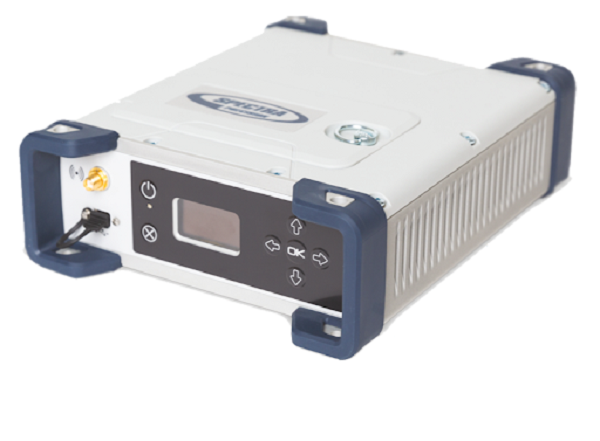
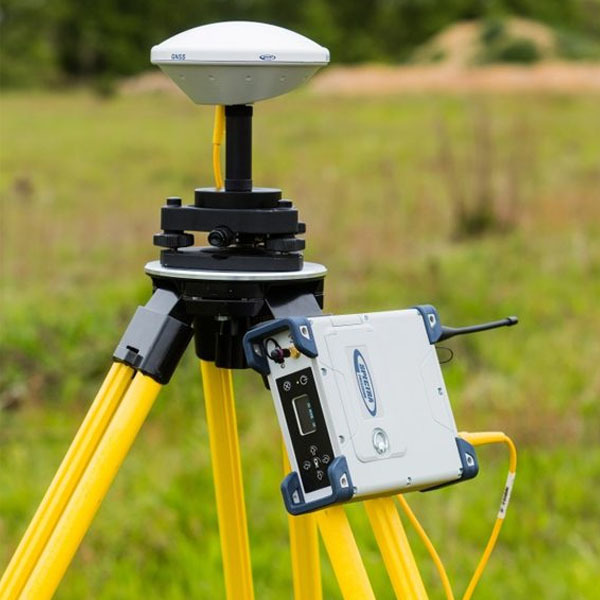
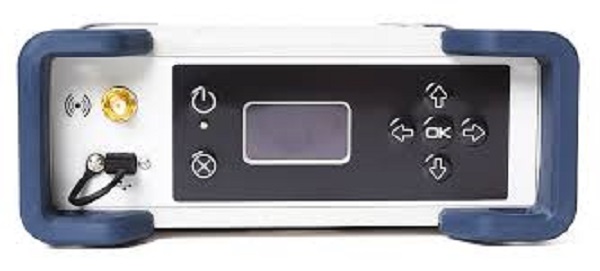
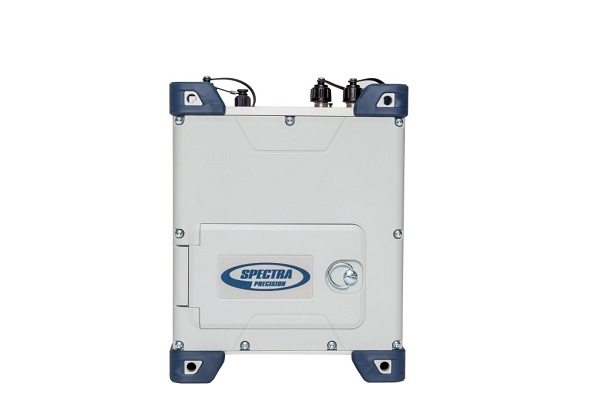
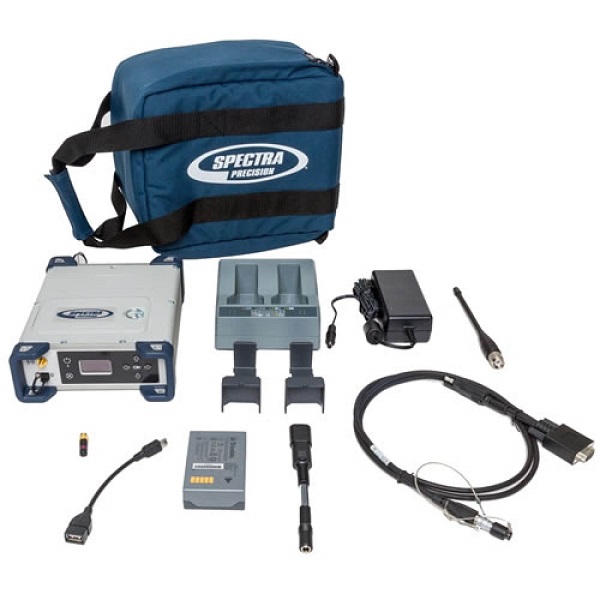
Reviews
There are no reviews yet.